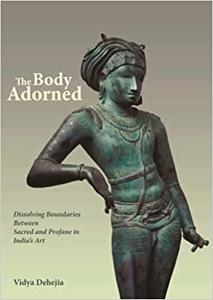
Vidya Dehejia, "The Body Adorned: Sacred and Profane in Indian Art"
English | 2009 | ISBN: 0231140282 | PDF | pages: 260 | 17.3 mb
The sensuous human form-elegant and eye-catching-is the dominant feature of premodern Indian art. From the powerful god Shiva, greatest of all yogis and most beautiful of all beings, to stone dancers twisting along temple walls, the body in Indian art is always richly adorned. Alankara (ornament) protects the body and makes it complete and attractive; to be unornamented is to invite misfortune.
In The Body Adorned, Vidya Dehejia, who has dedicated her career to the study of Indian art, draws on the literature of court poets, the hymns of saints and acharyas, and verses from inscriptions to illuminate premodern India's unique treatment of the sculpted and painted form. She focuses on the coexistence of sacred and sensuous images within the common boundaries of Buddhist, Jain, and Hindu "sacred spaces," redefining terms like "sacred" and "secular" in relation to Indian architecture. She also considers the paradox of passionate poetry, in which saints praised the sheer bodily beauty of the divine form, and nonsacred Rajput painted manuscripts, which freely inserted gods into the earthly realm of the courts.
By juxtaposing visual and literary sources, Dehejia demonstrates the harmony between the sacred and the profane in classical Indian culture. Her synthesis of art, literature, and cultural materials not only generates an all-inclusive picture of the period but also revolutionizes our understanding of the cultural ethos of premodern India.



